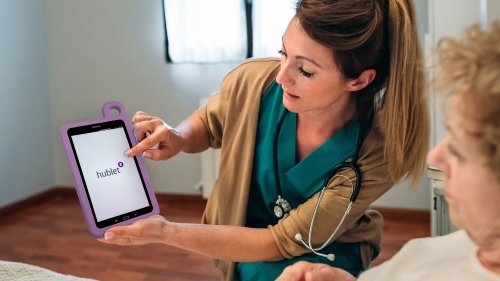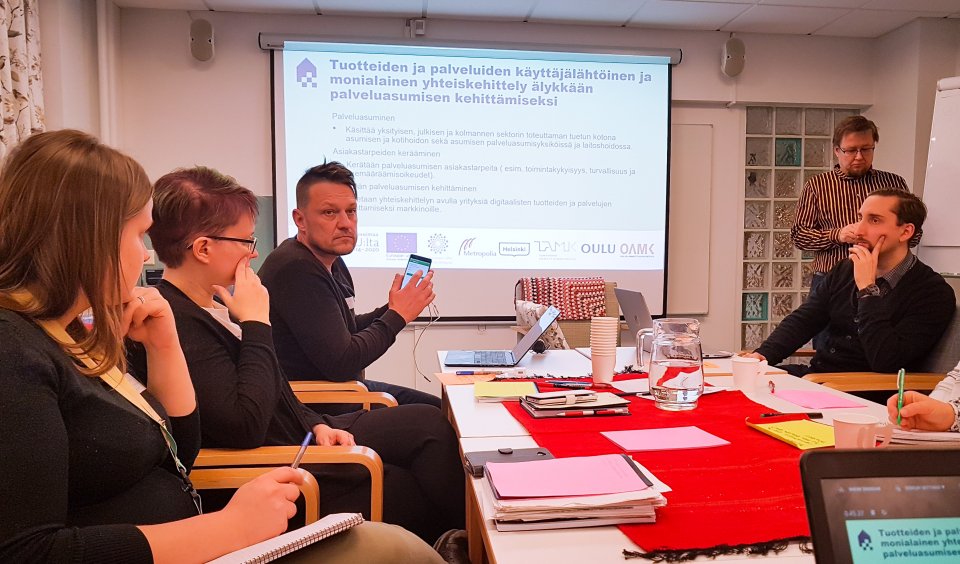
The future sheltered housing needs will not be solved solely by increasing the number and skills of the staff. In addition to that, digital products and services are needed. In previous projects we have found out, that co-creation enables user-driven development. This is what we want to improve in the 6Aika project: HIPPA – Wellbeing and better service housing through digitalisation. The first co-creation event was held on December 2018 with IOTAS. IOTAS develops a smart wristband.
User-centered and multidisciplinary co-creation
Enabling residents to have a safe and meaningful life through digital products and services requires understanding about residents and employees and their everyday lives in a sheltered housing environment (Harra and Lintula 2018). Service (or sheltered) housing is a wicked problem right now, and new solutions are needed to address it. The best solutions can be found through co-creation (Rittel and Webber 1973).
Harra, Mäkinen and Sipari (2012) have found that the most acute wicked problems to be solved by co-creation are the development of work community activities, co-operation between organizations, and the development of working methods for working life and education. In addition to these, co-creation suits also well for the development of sheltered housing products and services.
At the heart of multidisciplinary co-creation are the needs of the users. New ideas, development proposals and best solutions are the results of active and diverse dialogue (Laudan 1996). It requires the product or service, university experts and students, and innovative companies. Co-creation can enhance user and customer-centred development alongside producer-centred operations.
Co-creation improves the quality of development and strengths the participant’s skills to analyze and conceptualize his/her experiences. Also, the results are put into practice already during the development process. Participants’ well-being is improved when they can feel that they are co-operating meaningfully. (Harra, Mäkinen and Sipari, 2012.)
Co-creation is born and lives in multidisciplinary dialogue
Each co-creation event is unique and the success depends on many factors. According to Kokkonen (2012), the first needed thing is to find motivated participants who know the topic from different points of view. It is also necessary to find the appropriate time to go through the subject. Space must be desirable and easily accessible. The motivators to participate can be the process itself and new contacts. Co-creation events create an ecosystem that overrides competition between participants. The level of appeal, comprehensibility, and difficulty involved in the topic will encourage participants to take up the issue.
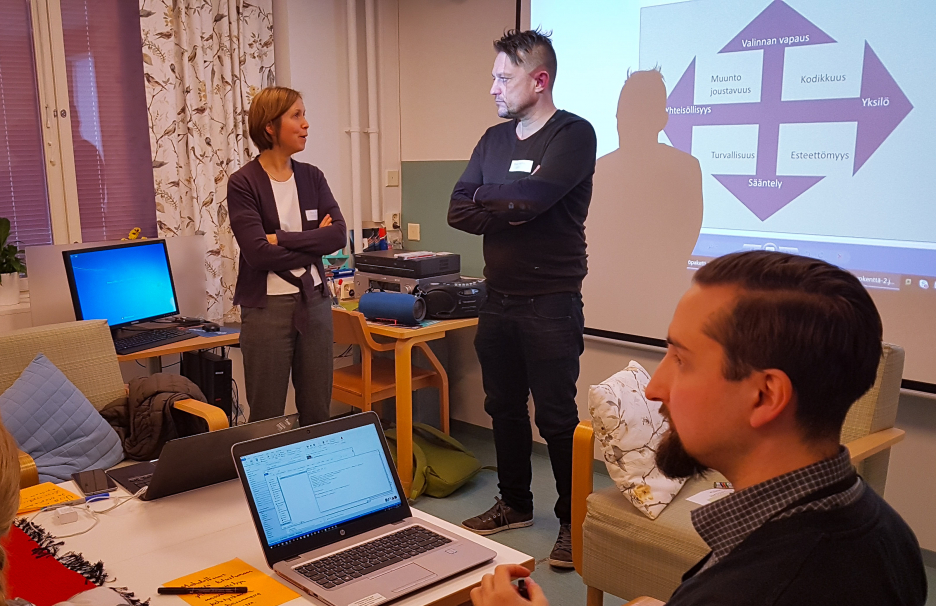
Planning the co-creation event well beforehand helps the facilitator to effectively use the time and focus on the essentials of the event. However, the facilitators have to be prepared to make changes for the plan during the event. Participants’ expectations and goals may be different from what is planned, a section of the plan can be dealt with more quickly, or some topics need to be viewed more thoroughly. In spite of these changes, one more task is to ensure, that the thread of the event is maintained, the focus is not lost, and co-creation flows.
Instead of compromise or consensus, co-creation seeks polyphony and understanding that is built together. Because the problems in sheltered housing are complex, there is no right or wrong solution. In co-creation process participants study the needs and suitable solutions for the development of sheltered housing.
By using co-creation, you can:
- create an inspiring atmosphere
- increase possibilities to participate
- strengthen the sense of being a meaningful part of the group or issue
- balance communication between quiet and loud participants
- encourage participants by bringing up their expertise
- share the experiences, knowledge and skills of the participants for the common use
- enhance equal working and decision-making in the direction of a goal that is set together
Case: Co-creation with IOTAS
The two-hour co-creation event with IOTAS took place in December 2018 at the sheltered house in Myllypuro. A company representative and staff from the sheltered house and Metropolia were present. Co-creation process consisted of five phases, (Figure 1).
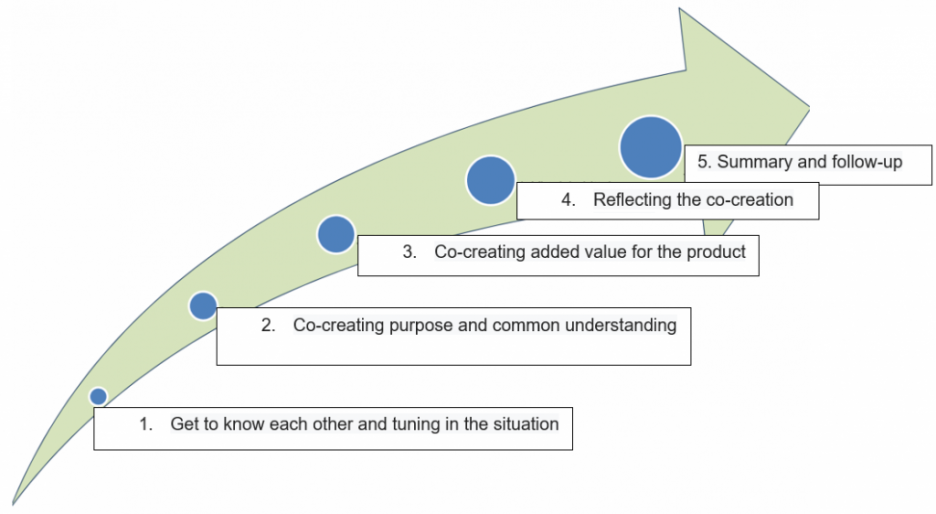
Introductions and tuning in
Introducing the participants and tuning in by giving up roles and leaving the day´s work outside the room was a way to create an open atmosphere. This supported and encouraged participants to have an equal and interactive discussion.
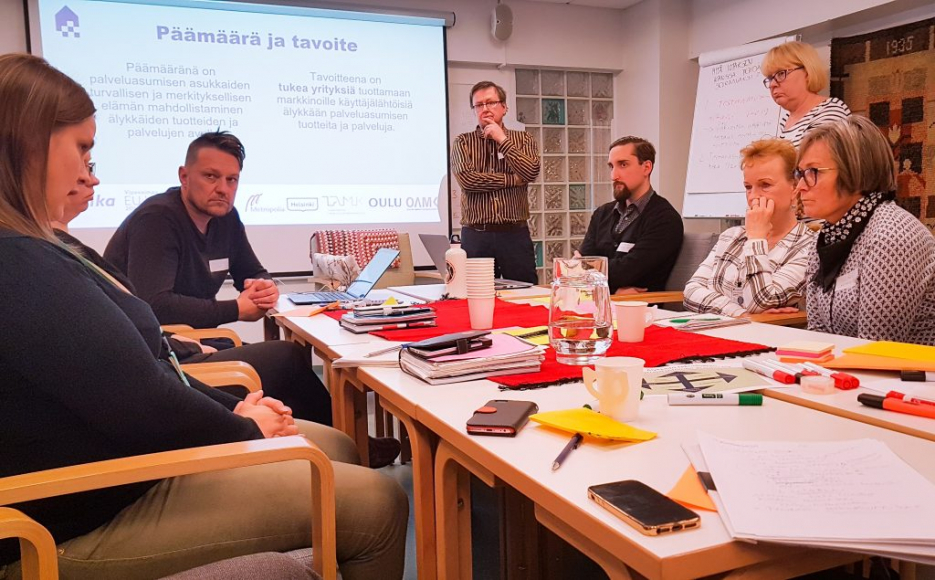
In order to allow participants to participate and bring their expertise, the goals of the HIPPA project and the purpose of co-creation were described as background. They created a common understanding of the goal of co-creation. When the expectations of the participants were heard, they were more committed to the work and helped the facilitators to guide the work in the right direction. This supported participants to focus more on important issues and keep the discussion within limits.
The participants’ expectations towards the co-creation were to get more opportunities to come up with ideas and to develop them together as well as to generate new ideas to drive the product forward. In order to make this happen, they saw that the needs for the product-related development should be identified together and the development work should focus on concrete actions.
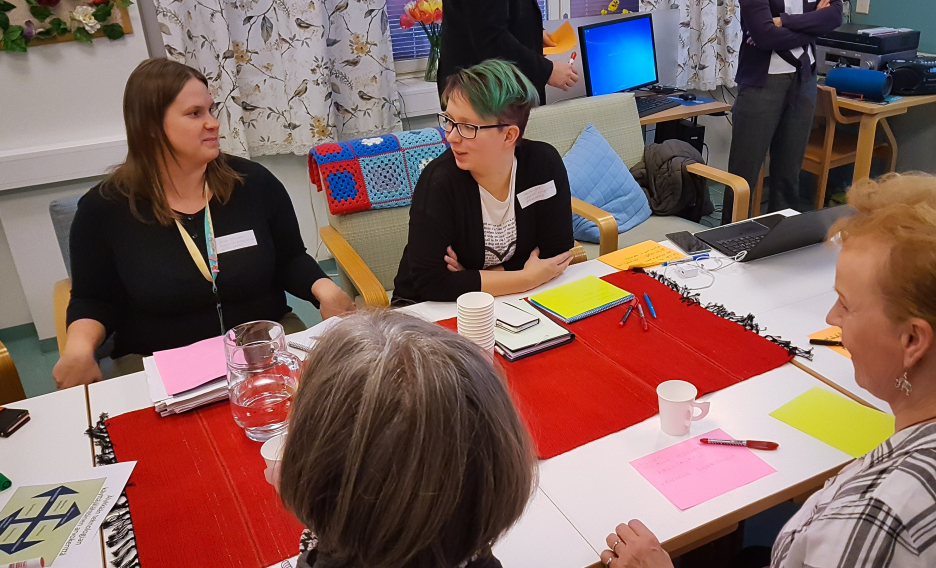
Creating added value for the company´s product
In order to create added value for the product, we customized tables with value canvases (see, for example, Liikkanen 2018) to structure and to orientate the focus of discussion towards goals.
Describing the features of the product helped participants to understand the designation and the technology of the product.
Through a discussion of the benefits of the product, the participants learned about the potential of the product to improve the quality of life and care of the residents of the sheltered housing units and the work of the staff.
The usability of the product and the extension of its purpose were achieved by directing the discussion to the future users, their needs and the operations of the service centre. For example, for usability issues, a product designed for the wrist could be unsuitable for a person with memory impairment who don’t like to have anything around the wrist. Also, they discussed technical issues related to the security of supply and charging time of the product. Finally, the discussion directed to issues, such as product-related data protection, product compatibility and interfacing with different systems used in social and health care emerged.
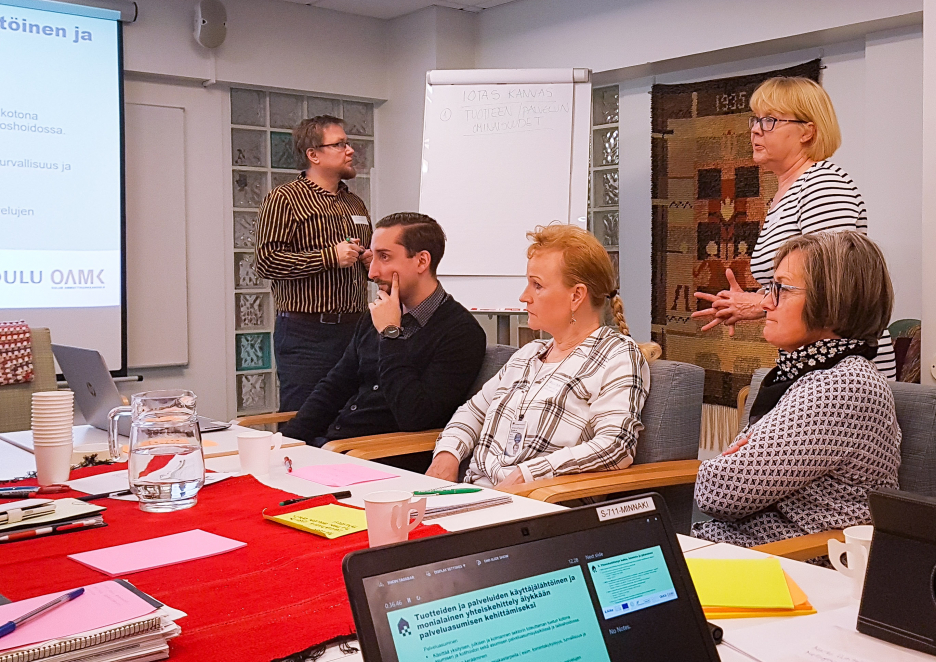
Importance of the co-creation for participants
In the reflecting phase, we were interested in participants’ experiences of co-creation as a model of product development and its relevance to themselves.
We used open questions to bring the experiences up. Each participant answered two questions of their choice:
- Today, I found interesting …
- New for me was, …
- Useful for me was …
- I hoped to have more …
The company representative had a positive experience with co-creation. He considered the views of the professionals and the enthusiasm of the participants for the product importance for further development.
Other participants saw co-creation as an interesting way of working. It created a good, interesting and varied discussion about the product. There were confluences between the product and the user’s needs. During the co-creation were discussed concrete practical issues and wishes for the development. The participants found it important also to test the product.
Did we meet the expectations and what next?
The co-creation event was finished by examining the participants’ expectations and their fulfilment. In addition, the company agreed on the next steps to continue co-operation. The event was concluded by thanking the participants for their active participation in the co-creation. Co-creation brought the users and developers of the product together in an enriching way.
References:
Harra T. & Lintula L. (2018). Käyttäjälähtöisyys älykkään palveluasumisen kehittämisessä. Metropolia Ammattikorkeakoulu.
Harra T., Mäkinen E. & Sipari S. (2012). Yhteiskehittelyllä hyvinvointia. Metropolia Ammattikorkeakoulu. (only in Finnish)
6Aika: Hippa – Hyvinvointia ja parempaa palveluasumista digitalisaation avulla (2018).
Kokkonen J. (2012). Fasilitoinnin ulkoiset puitteet. An article in Yhteistoiminnan rakentajat. Kokemuksia fasilitoinnista. (Toim.) Linkola J. & Kokkonen J.. Metropolia Ammattikorkeakoulu. Kulttuuri ja luova ala. (only in Finnish)
Laudan L. (1996). Beyond Positivism and Relativism. Boulder: Westview Press.
Liikkanen L. (2018). Value Proposition Canvas suomeksi. (in Finnish)
Rittel H. W. & Webber M. M. (1973). Dilemmas in a General Theory of Planning. Policy Sciences(4), 155–169.
This article has oroginally been published in HIPPA project´s blog 20.8.2019.
Writers
Toini Harra, toimintaterapeutti, FL ja YTT, yliopettaja, Metropolia Ammattikorkeakoulu, projktipäällikkö, HIPPA-hanke
Leila Lintula, toimintaterapeutti, THM, lehtori, Metropolia Ammattikorkeakoulu




